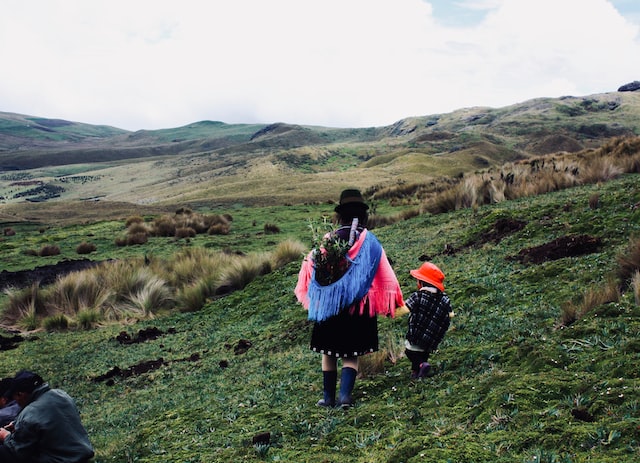
In 1999 UNESCO declared February 21 to be International Mother Language Day to promote awareness of linguistic diversity and multilingualism. Although there are about 6000-7000 languages spoken or signed around the globe, there are a number of mathematical patterns or rules found in all languages that make us more similar to each other than we might think from listening to each other speak or watching each other sign.
One of those rules about words, called phonotactics, determines which sounds belong to which language, and how those sounds can be put together to make a word. For example, the “ng” sound (like in the English words sing or ring) is an acceptable sound in English, but only at the ends of words; it can’t be used to start a word in English. In Albanian, however, it’s okay to start a word with that sound, as in the Albanian word ngaqë (‘because’ in English). Some languages don’t even use that sound at all. People who are good at the game Wordle know these phonotactic rules very well.
In addition to the rules about which sounds are used to form words, there are also mathematical patterns about words themselves. You may have noticed that some words are used more often than others. If we mathematically plotted this pattern, we find that the most common word (“the” in English) occurs twice as often as the second most common word (“be” in English), and three times as often as the third most common word (“to” in English). This pattern is known as Zipf’s Law.
If we looked more closely at the common and less common words, we would find that the more commonly used words tend to be shorter (like the, be, and to in English), and the less commonly used words tend to be longer, like Pneumonoultramicroscopicsilicovolcanoconiosis. This relationship between how often a word is used and the length of the word is known as Zipf’s Law of Brevity (yes, George Kingsley Zipf was a very busy linguist).
These mathematical patterns are not only found in spoken languages, but are also found in the nearly 300 signed languages used around the planet, like American Sign Language. It is important to note that American Sign Language (ASL) is completely different from spoken English; it is not simply a gestural version of English. And, although spoken English is pretty similar in Great Britain, Australia, and other places where English is spoken, ASL is completely different from British Sign Language (BSL), Australian Sign Language (Auslan), and other sign languages in the world.
I hope you found the mathematical patterns in the languages of the world interesting. Unfortunately, there’s a mathematical fact about languages that should scare you. The National Geographic Society estimated that every 14 days a language goes extinct. Just like a plant or animal species goes extinct when the last of its kind dies, the death of the last speaker of a language marks the extinction of that language.
Why should that worry you, you ask? After all, doesn’t the story of the Tower of Babel tell us that if we all used one language, we’d be able to work together to do anything, even reach the heavens?
Well, languages are more than just a bunch of words. They shape how we see the world. They connect us to the past. They help form our current identity. And they allow us to pass on our culture to future generations. Language is so powerful that if it weren’t for the Native American Code Talkers in World War 2, everyone in the world might be speaking German or Japanese right now. So take some time today to celebrate International Mother Language Day, to appreciate the languages you use and hear or see around you, to visit Planet Word (a museum in DC that highlights the power and diversity of the world’s languages), or to think of new ways to preserve or revitalize a language before it’s too late. Just like a diverse biological ecosystem leads to a healthy and productive environment, a diverse linguistic ecosystem leads to a healthy and productive world.
Michael Vitevitch, PhD is a professor in the Psychology Department at the University of Kansas. His research applies the mathematical tools of network science to language, and also examines various types of speech errors (including the tip of the tongue state) and auditory illusions (like the speech to song illusion).





